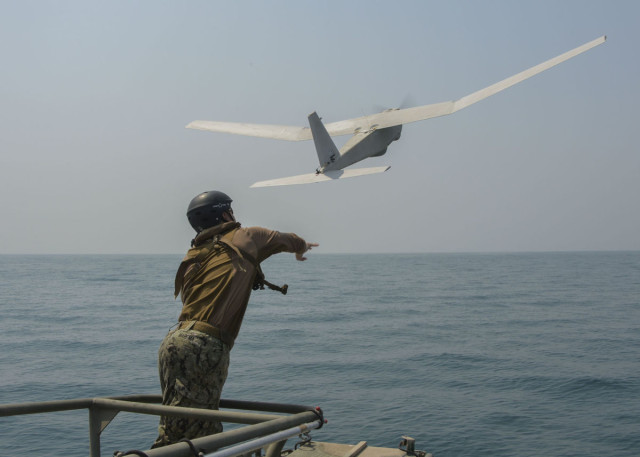U.S. Special Operations Command bought dozens of hand-launched drones that failed military tests and may not be able to meet mission requirements in the harsh environments they were designed for, according to a newly released report from the Defense Department’s inspector general.
The waterproof drones conduct intelligence, surveillance and reconnaissance missions and are capable of landing on land and in fresh or salt water. AeroVironment Inc. of Simi Valley, Calif., was awarded an initial one-year, $6 million contract to build an indefinite quantity of the Puma AE for Special Operations Command in 2008, with an option for four more one-year contracts with a maximum value of $200 million.
But initial testing revealed the drone didn’t meet Special Operations Command’s stated needs for launch and recovery, or requirements for its weight and size, the DOD report said.
Special Operations Command oversees each military branch’s special operations forces, including the Navy’s Virginia Beach-based SEALS.
The command’s “testing results questions whether the current capabilities of the AECV system are sufficient to fulfill its mission and whether the current capabilities represent a significant increase in performance to justify the acquisition of the AECV,” the report says, referring to the drone.
The Puma AE had difficulty landing within 25 meters of a designated point in winds of 17 mph, the DOD report says. In one instance, the drone landed 81 meters – almost the length of a football field – from its designated spot. To meet Special Operations Command’s requirements, the drone was supposed to be able to repeatedly land within 25 meters of a spot in winds of up to 23 mph, yet testing never reached those speeds.
“The AECV works great under most of the conditions we encountered … all except the winds,” one unidentified evaluator said in the report. “The gust of winds cause the aircraft to turn and climb un-commanded numerous times during the testing phase.”
The report was dated Feb. 4, 2015, but was made public this week. It says Special Operations Command acquired 41 of the drones because it didn’t follow its own procedures for re-validating programs “that did not meet primary performance attributes.”
According to the test plan, “if the system doesn’t meet all primary performance attributes, the system is not considered operationally effective or suitable.”
Special Operations Command officials who certify the drone’s effectiveness were supposed to notify acquisition officials of the drone’s shortcomings. But for reasons the report doesn’t detail, testing results erroneously showed the program met minimum standards and no notification was made. If notification had been made, the program could have been re-evaluated or had its production increments modified.
Instead, Special Operations Command officials said in September 2014 they planned to spend $35.4 million buying additional drones through the 2019 fiscal year. The report notes the test plan allowed evaluators to override rules for determining its success by providing “adequate justification” as to why a specific shortfall wasn’t operationally significant, but no justification was provided.
Another evaluator identified other shortfalls in the drone, saying its infrared camera “has horrible resolution” and is unable to positively identify targets.
The drone also failed to meet standards that required it to fit in two waterproof, protective cases with a combined weight of 50 pounds. During testing, the drone was packed in foam and stored in waterproof bags, which exceeded the weight by one pound, the report said.
Even then, one operator said the foam broke during field testing. Another operator said the foam cases need to be protective to secure the drone during transport while another said the foam case didn’t offer realistic protection and was cumbersome during transport.
Waterproof protective cases were later tested, but the combined weight was 110 pounds – more than double the target weight.
Hand-launched drones produced by AeroVironment have been used by the military for years, but the Tampa, Fla.-based Special Operations Command wanted a version to operate in all weather conditions. The system was designed so it could launch and recover the drones without modifications to naval vessels.
A new variant was set to undergo testing in January 2015 to demonstrate compliance in the areas where it had failed. It’s unclear how those tests went. AeroVironment did not respond Wednesday to requests for comment.
Photo: Petty Officer 1st Class Peter Lewis | U.S. Navy
Source: The Virginian – Pilot

